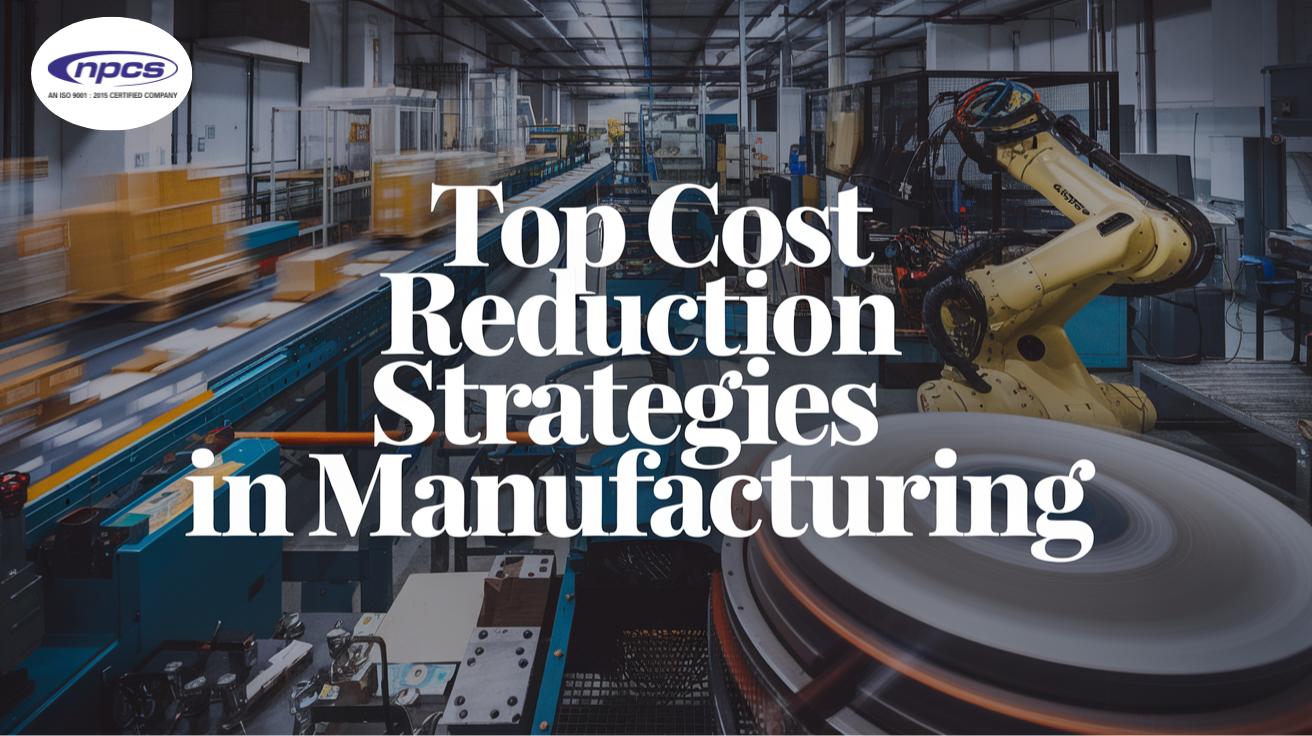In today’s competitive manufacturing environment, the focus is on making business profitable. However, among the myriad of ways through which profits can be increased, cost reduction strategies in manufacturing will surely go a long way in realizing this end. The process can be improved through the optimizing operation processes, eliminating waste, and enhancing operational efficiencies while costs become significantly low levels and all this happens while product quality is retained. Therefore, in this article we will discuss some best in cost reduction strategies in manufacturing that ensure the companies remain competitive and profitable.
Related Books: Business books on several industries
Importance of Cost Reduction Strategies in Manufacturing
There’s no industry that faces as much demand pressure and need for cost reduction than that of manufacturing. Quality costs money, and sometimes you need to cut these costs. Cost reduction strategies in manufacturing for making a successful profit include ongoing maintenance of profitable conditions by preventing lean manufacturing and overhead reductions. If you want to be successful financially, however, implementing the correct components will help to identify and realize the applicable opportunities.
Related Business Plans: Business plans on different manufacturing Industries
Lean Manufacturing: A Key Cost Reduction Strategy
Cost reduction strategies in manufacturing is the most popular methodology of all time. These principles focus on waste elimination, improved workflow, and productivity as a whole. Lean application as value streams mapping, under continuous improvement (Kaizen), and the just-in-time (JIT) inventory management will help manufacturers eradicate non-value-adding costs and enhance operational efficiency.
Key components of lean manufacturing include:
- Waste Reduction:Identification and elimination of any waste in processing, such as unnecessary inventory, overproduction, rework, and defective items.
- Process Optimization: Improving available processes by adding actions that produce results thus minimizing time spent waiting and moving, resulting in the perfect end process.
- Employee Engagement: Deal with workers when it comes down to making day-to-day decisions that would affect them as well as in continuous improvement effort decisions.
Related article: Startup Ideas in the Age of Smart Manufacturing: Opportunities in 2025
Automation and Technology Integration
As a result of this evolution, manufacturing has become even simpler and cheaper by bringing all systems within the operational process under the umbrella of automated, advanced technologies. From minimizing labor to speeding up production, maximizing precision, with Industry 4.0 and its accompanying automated advanced technologies like robotics, artificial intelligence (AI), and the Internet of Things (IoT), manufacturing is revolutionized.
By automation, manufacturers can achieve:
- Better Efficiency: Machines can run constantly, round the clock, considering that there are no breaks at any time of day.
- Reducing the Human Error: Better high quality of products because it minimizes the possibility of error occurring by manual labor.
- Savings at the end: They utilize fewer employees for repetitive tasks.
Project Reports: Manufacturing Business Project Reports
Energy Efficiency: A Sustainable Cost Reduction Approach
Energy cost is one of the greatest components of the cost of manufacturing. Therefore, it becomes effective in cost reduction strategies in manufacturing through implementing energy-efficient practices. Energy optimization will eventually lead to reduced utility bills, which also correspond to reduced environmental impact. Some ways include the following:
- Equipment Replacement: Replacement of old machines with these efficient models.
- Energy Audits: Energy audits on base area at intervals to reveal every area that could have reduced energy consumption.
- Employee Training: Teaching workers energy conservation practices, like turning off machines when not in use.
Making manufacturers focus on energy makes their cost management environment reflect a good picture of sustainability efforts.
Also Visit: Market Research Reports
Supply Chain Optimization
Supply chains contribute significantly to the total cost profile of manufacturing organizations. By managing their supply chains more effectively, manufacturers are able to improve costs associated with their raw materials, transport costs, and inventories, among others. A few important options include:
- Supplier Negotiation: To produce much better pricing in payment terms with suppliers, developing effective relationships with suppliers is required.
- Inventory Management: The different techniques for inventory control, such as JIT, cause the organization to hold less inventory and waste fewer resources.
- Logistics Optimization: It reduces the costs associated with shipping through the efficient routing of transportation and their methods.
In order to be made possible by the management of the supply chain, the sources of materials at the very minimum price and in an effective economy
For any Business related Query: Visit NPCS
Employee Training and Skill Development
Another cost-reduction strategy in manufacturing relates to investing in employee training. The better trained people are, the more efficient they will be, the fewer mistakes they will make, and the more they will be able to contribute to the continuous improvement of manufacturing processes. Some avenues by which employee training would lead to cost reduction are as follows:
- Cross-Training: Teaching workers to perform multiple roles, which is especially helpful when labor costs are high but improves one’s flexibility.
- Safety Training: Reducing accidents in the workplace and injuries, which otherwise result in expensive downtime and claims.
- Continuous Improvement: Putting incentives to suggest process improvements by involving employees because ideas being converted into practice can also save costs.
Thus, by the development of a skilled workforce, an improvement in productivity and its commensurate cost-saving to manufacturing will be realized in the long run.
Demanded Businesses: Most Demandable Business Ideas
Preventive Maintenance: Reducing Downtime and Repair Costs
Downtime has a considerable cost to manufacturers if it is spontaneous with equipment failure. Preventive maintenance is a cost buddy proactive cost reduction strategy in manufacturing because it minimizes equipment breakdown risks and subsequently reduces repair costs. By scheduling periodic maintenance and inspection, manufacturers can:
- Increase Equipment Life Span: Preventive maintenance prolongs the life of machines while also ensuring power-packed performance in operation.
- Decrease Repair Cost: Breakdown preventive measures avoid expensive emergency repair costs.
- Boost productivity: Regular maintenance would ensure the machine is running efficiently without downtime.
Scheduling preventive maintenance can provide significant savings and give you much smoother operations while avoiding unexpected costs.
For Business related Videos: Visit Entrepreneur India
Conclusion
As learned, cost reduction strategies for manufacturing form an essential part of the understandings for companies that want to compete and be profitable in today’s rapidly evolving markets. This means such companies would need to adopt lean manufacturing, increase automation, optimize supply chain operations, spend on manpower training, and implement preventive maintenance for the best value-at-price from costs and greater improvement in productivity and product quality. Tightly binding such action with the accepted strategies for reaching success would mean keeping pace competitively with manufacturing better in long-term staying power.




